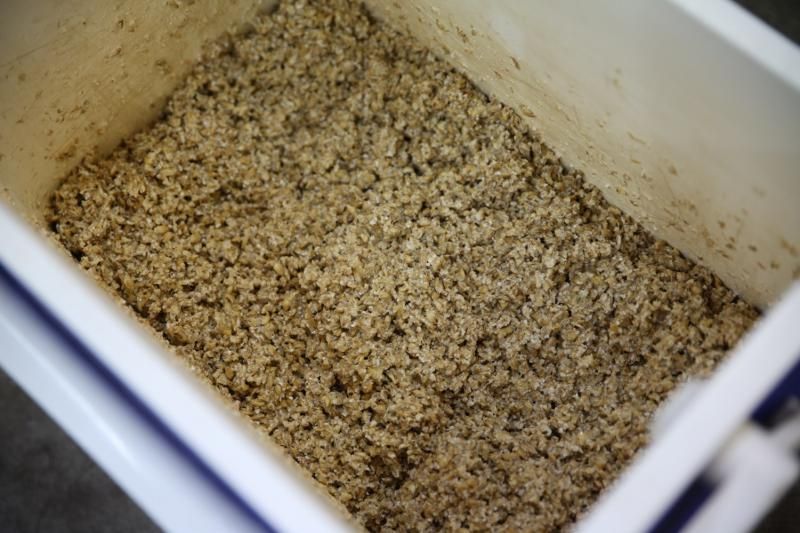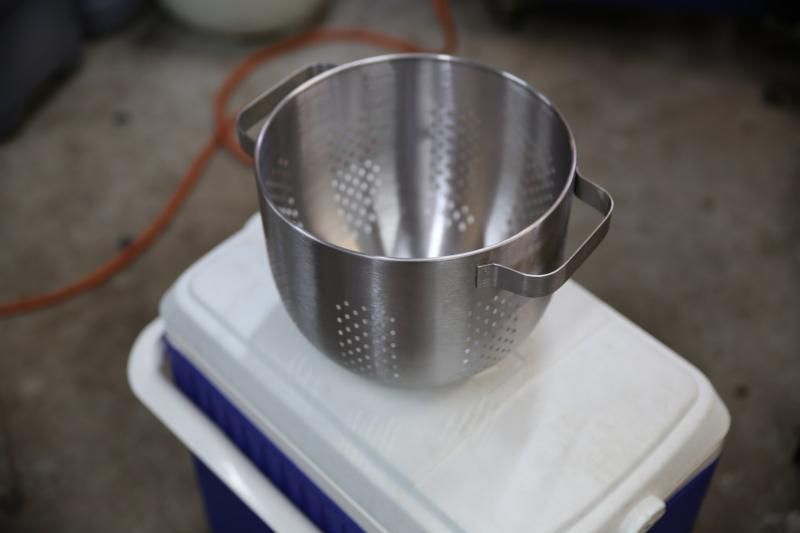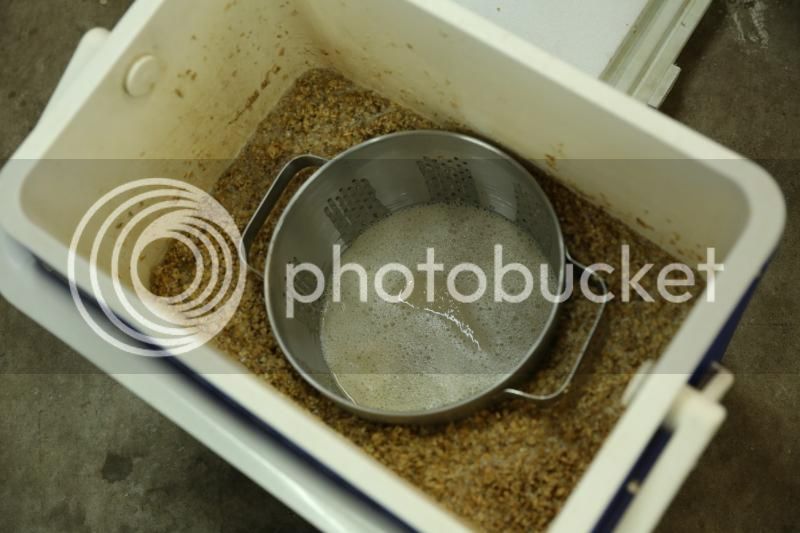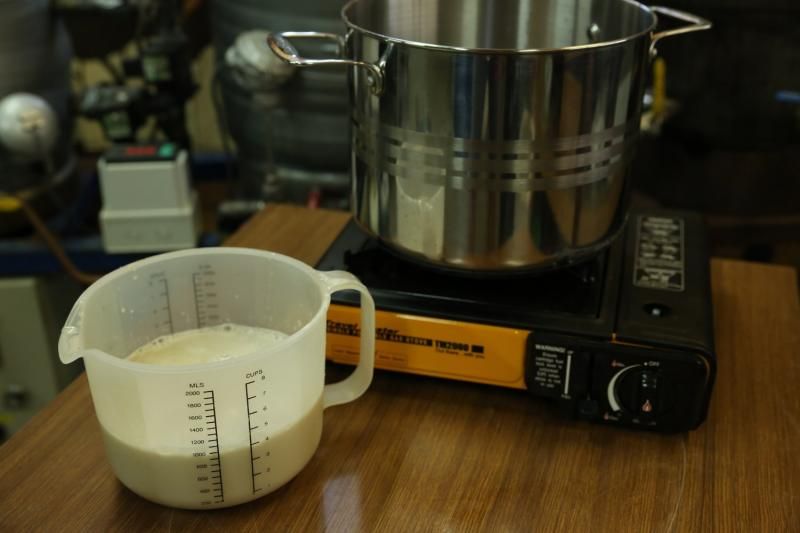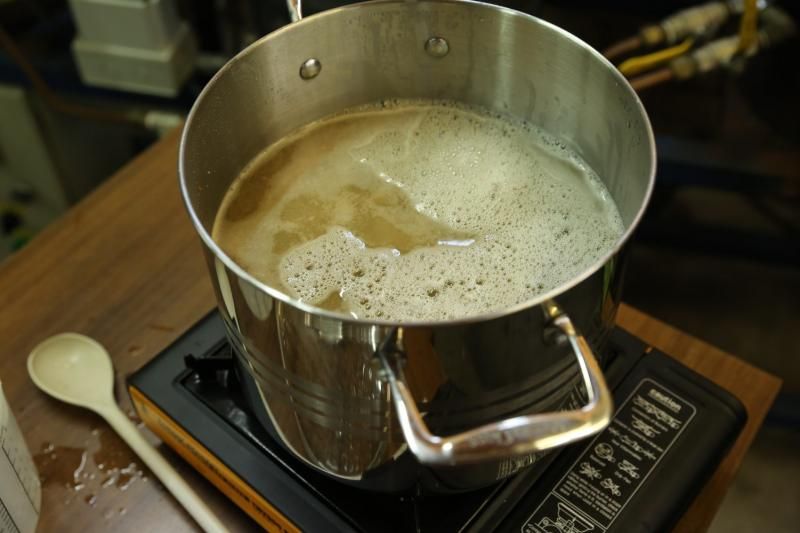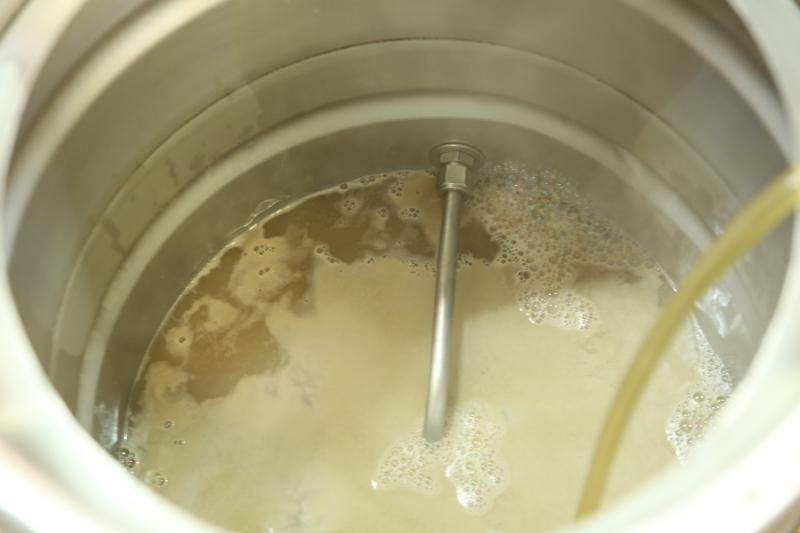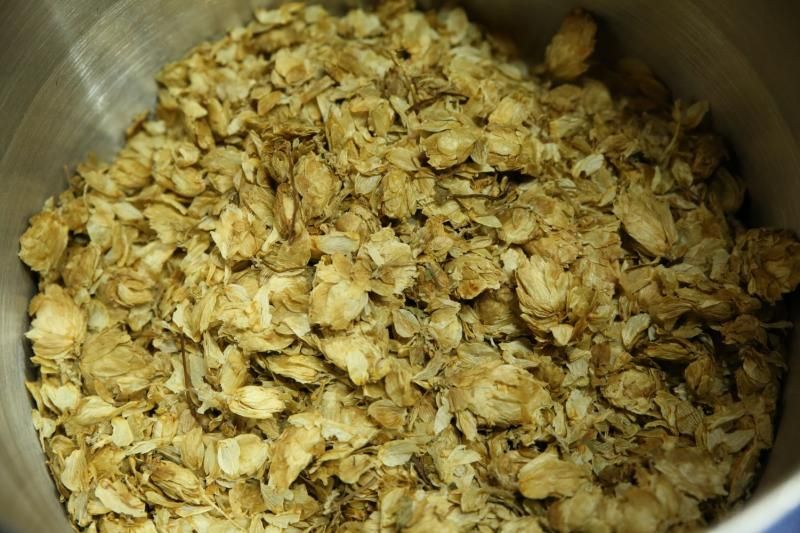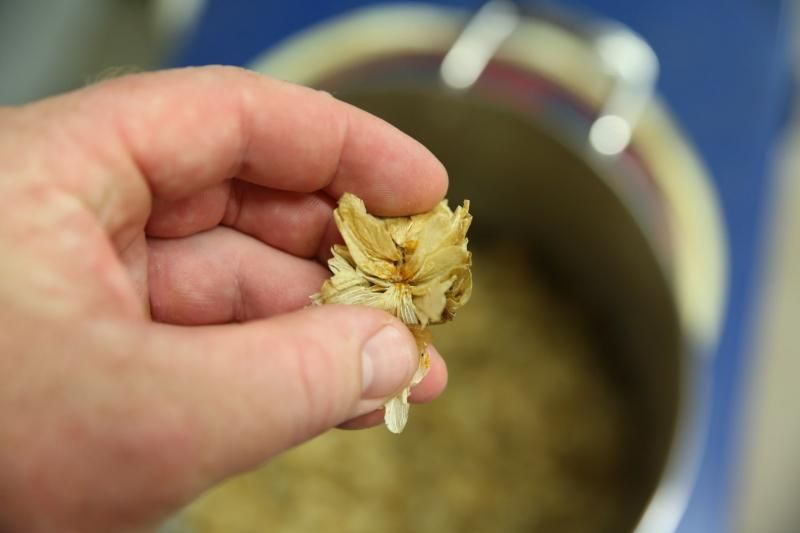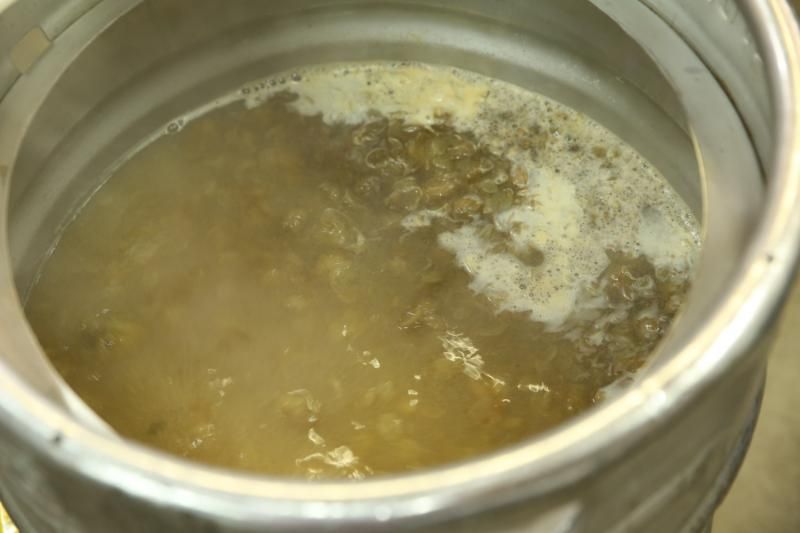Today was the day for brewing Lambic. Winter is approaching and its going to be the best time to let it sit in its early stages.
I had a bit of trouble swollowing the "mashing high to get some unfermentables for the bugs" line of thought so I spent a fair bit of time reading and researching. I also had a dig through some old brewing folders on my computer with documents i saved many years ago when i was thinking of doing this. I found some great stuff, that probably didnt make much sense to me back then. But i know a lot more now and i was ready.
Im hoping this (long winded) post will pass on some of my thoughts and findings.
My research led me to the fact that its not so much the residual complex sugars that the bugs eat, but unconverted starch (particularly from unmalted wheat), tannins and other crap picked up in a hot sparge, compounds produced by yeast autollosis, diacetyl, the dead Saccharomyces yeast that does most of the fermentation, and anything else left over in there.
I now think of lambic bugs as goats....... The cows (Sacch yeast) will eat all the green grass and move on. The Goats (brett) will eat all the weeds and nasties that are left, cleaning up the mess left by the cows, and producing a very good usable paddock in the end. Brett also ferments without producing gas.
Another interesting thing i found was that the bugs work in stages. One sets the stage for the next, by producing compounds, by-products and adjusting wort pH during its active stage, and then dying off.
So basicly to make a half respectable Lambic, i figured i neded to break all the usual rules while mashing and sparging. I needed a lot of unconverted starch in the boil and i needed a lot of the burst starch and tannins associated with hot sparging (90 deg).
I also noted that it is traditional to boil for 3.5 to 6 hours.
So i did a full turbid mash, which is actually quite easy to be honnest. You just need to be johhny on the spot with having you water ready for all the steps, a good supply of hot water to speed things up, 2 burners and a collander that will fit in your mash ton.
Of course the other thing is aged hops, which i was lucky enough to source some AWSOME low AA very old hop flowers. They had near zero bitterness when i chewed one up. Perfect!
Now........ the recipe etc:
pLambic
-------------------------------
17-D Sour Ale, Straight (unblended) Lambic
Min OG: 1.040 Max OG: 1.054
Min IBU: 5 Max IBU: 10
Min Clr: 6 Max Clr: 14 Color in EBC
Recipe Specifics
----------------
Batch Size (L): 22.00 Wort Size (L): 22.00
Total Grain (kg): 5.00
Anticipated OG: 1.053 Plato: 13.15
Anticipated EBC: 7.0
Anticipated IBU: 5.6
Brewhouse Efficiency: 75 %
Wort Boil Time: 180 Minutes
Grain/Extract/Sugar
% Amount Name Origin Potential EBC
-----------------------------------------------------------------------------
70.0 3.50 kg. Weyermann Pilsner Germany 1.038 4
30.0 1.50 kg. Unmalted Wheat Australia 1.036 3
Hops
Amount Name Form Alpha IBU Boil Time
-----------------------------------------------------------------------------
90.00 g. Aged Hops Whole 0.50 5.6 120 min.
Yeast
-----
3278 Lambic Blend
Mash Schedule
-------------
Mash Name: Turbid Mash
Total Grain kg: 5.00
Step Rest Start Stop Heat Infuse Infuse Infuse
Step Name Time Time Temp Temp Type Temp Amount Ratio
---------------------------------------------------------------------------------
step 1 2 10 45 45 Infuse 55 5.00 1.00
step 2 2 10 59 58 Infuse 99 2.46 1.49
step 3 2 30 66 65 Infuse 99 2.23 1.94
step 4 2 20 72 72 Infuse 99 2.88 2.51
Below i will do a bit of a pictorial story of how i did it. Pictures paint a thousand words

Note: I have no idea the reason behing the temp rests...... its just what most texts say the big Lambic brewers use so that i went with.
First up, i filled the HLT (50L) on my mash rig and got it heating to 90 deg c. I was aiming for 22L final brew in the cube.
I ran the unmalted wheat through the mill twice to get it a bit finer and help pull some fine starches early and improve efficiency. I have no gulls so went with 30% wheat to help myself out.
Mashed in at 45 deg C @ 1L/Kg. Yep..... its thick!
Rest for 10 min and infuse with boiling water to 59 deg C.
I rested at this temp for 5 min and then pushed my collender into the thick mash.
I collected 1L of starch liquid, and poured it through a strainer (to collect any solids) into a 10L pot.
I put this on a 2nd burner and heated it to 85 deg to stop enzyme activity.
While it was heating, I also had my next infusion for the mash on a burner coming to the boil. Like i said.... you need to be johny on the spot.
After about 10 to 15 min at 59 deg C, I Infused up to 66 deg. Rest at this temp for 30 min.
After the 30 min rest, push the colinder into the mash again and collect about 3.5L of mash liquid. Tip this in with the origional 1L and heat imediatly to 85 deg to stop amy further enzyle activity.
While the turbid bit is heating, infuse the mash with boiling water to reach 72 deg C. Rest for 20 min.
After 20 min rest, put 2L of the turbid collected liquid in the kettle, and drained about 3 or 4 liters from the mash into the kettle also. I heated this to about 90 deg.
I then added the rest of the turbid liquid (that was sitting at 85 - 90 deg C) back to the mash and mixed in to get the mash temp to 75 deg. Rest 20 min.
I then drained to the kettle and sparged with 90 deg water to get enough collected wort in the kettle to require a 3 hour boil.
I added the aged hops after 20 min of boiling and just let it boil away, reducing the volume by about 30%
cubed and cooling now

cheers

